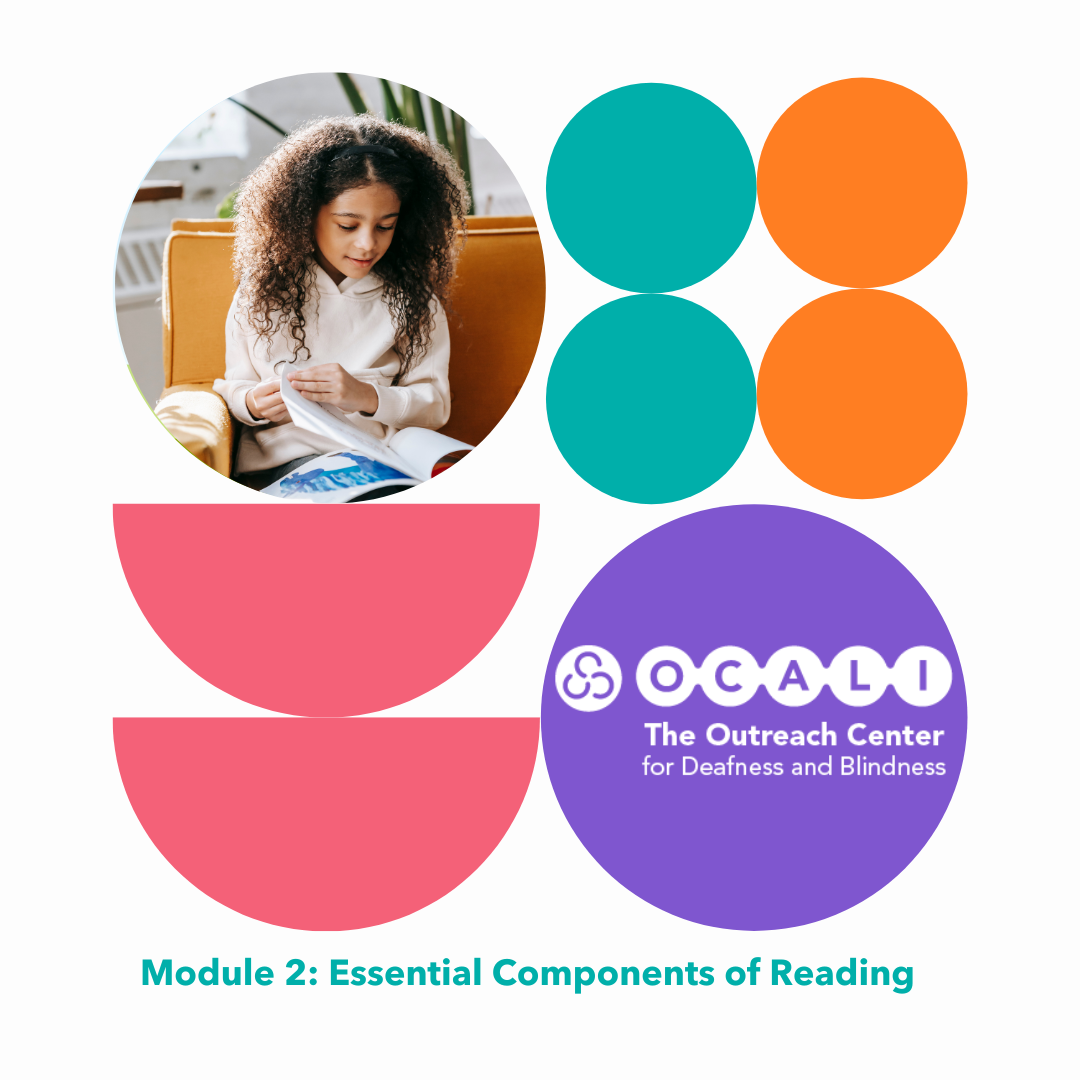Overview

Staying up to date on reading research while meeting and assessing the literacy needs of learners who are deaf or hard of hearing can be a juggling act. This module series is designed to provide educators and practitioners with what they need to implement best practices and provide access to reading instruction for each deaf or hard of hearing learner they serve.
This module is the second in the series and will dive into reading research and how it applies to reading instruction for deaf and hard of hearing learners.
This module is brought to you by The Outreach Center for Deafness and Blindness in partnership with The Teaching Diverse Learners Center at OCALI and The American Printing House for the Blind (APH). If you are providing instruction to learners who are blind/visually impaired, you can find the parallel set of modules in the APH Hive that will allow you to explore the process of teaching reading, examine how to strengthen reading skills for all students, and evaluate the impact of visual impairments on learning to read. Both sets of modules have embedded information from the Teaching Diverse Learners Center’s Ensuring Access to the General Curriculum for ALL Learners video series which explores strategies grounded in research in a 10-part resource designed to support all educators.
Estimated Time to Complete: 1 hour
Learning Objectives:
- Identify the Big 5+ ideas outlined in reading research that are critical components for literacy instruction for all learners.
- Describe the skillsets of ‘word recognition’ and ‘language comprehension’ and give one reason why mastery in each is needed to achieve reading comprehension.
- Give two examples of how learners who are deaf or hard of hearing may have access to and utilize phonological skills.
Presenters
- Angelica Gagliardi, M.Ed., Outreach Specialist, The Outreach Center for Deafness and Blindness at OCALI. Angelica Gagliardi, M. Ed., provides outreach services with The Outreach Center for Deafness and Blindness. She was a Teacher of the Deaf for ten years serving students in residential programs, day school programs, and mainstream programs throughout her career. Angelica has a passion for literacy, which was the focus of her graduate degree, and is a Master Teacher for the Fairview Learning Program. She works as adjunct faculty at Kent State University helping our soon-to-be educators develop high expectations for Deaf and Hard of Hearing learners by using research-based strategies to provide full access to grade-level standards.
- Shawna Benson, M.Ed., Program Director, Teaching Diverse Learners Center at OCALI. Shawna Benson has been an employee at OCALI since August 2008, where she is currently the Program Director for the Teaching Diverse Learners Center. She was the recipient of the Kathe Shelby Leadership Award in 2014. Benson has two degrees from Ashland University, a bachelor’s degree in Elementary Education grades 1-8 and a Masters in the Education of the Handicapped (K-12). From 2004-2014 she worked as an Associate Professor at Urbana University. Benson’s teaching experience includes courses such as Educational Technologies, Curriculum, Materials and Strategies for the Intervention Specialist, Diagnostic Reading and Remediation, Role of the Intervention Specialist and Classroom Management. She has also worked as the Director of assessment and the Director of Disability Services at the same institution. Previously, she was employed through Knox County Educational Service Center and State Support Team Region 7 as the Assistive Technology, Autism and Low Incidence Consultant. Prior to consulting she taught students with and without disabilities in ages ranging from infancy thru age 21. She has experience co-teaching in inclusive settings and providing intervention to students with a range of exceptionalities ages, needs, and interventions, which has provided her with a wealth of information that she now applies to her current work.
Various organizations have approved modules and webinars in the Learning Hub for continuing education credit.